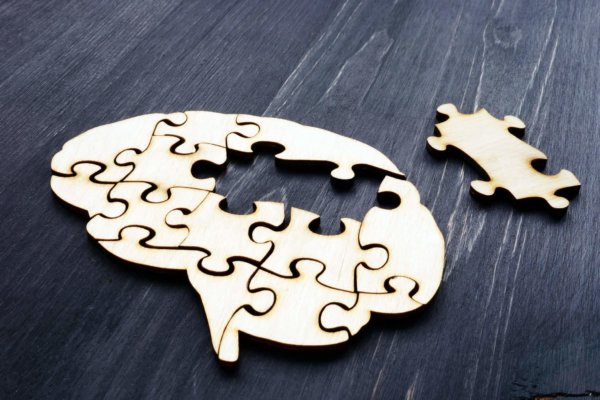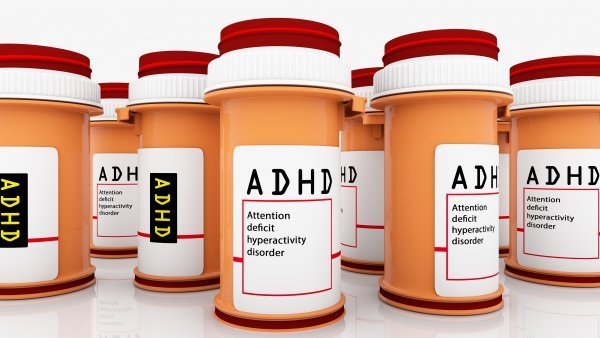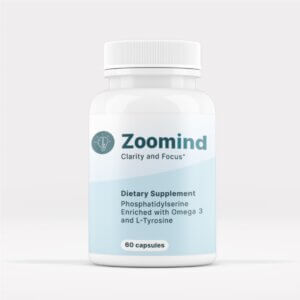
Introduction to Attention Deficit Hyperactivity Disorder
Attention deficit hyperactivity disorder (ADHD) is a mental health disorder that presents with repeating patterns of specific types of behavior, mainly as bouts of hyperactivity or as a lack of attention. These patterns of inattention or hyperactivity disturb the person’s functioning and educational or social development. Generally, symptoms begin during childhood and may persist throughout adult life.
Symptoms of attention deficit hyperactivity in children fluctuate over time, increasing and decreasing in frequency and intensity. At first, ADHD may be mistaken for other emotional or behavioral problems. For example, one symptom is restlessness and fidgeting, which may be confused as being a sign of anxiety. Avoiding activities that require concentration can be misunderstood as being caused by depression.
The starting point for any diagnosis must be a thorough physical examination, including vision, hearing, and other relevant sensory factors. Only after these have been assessed and all possible physical causes have been eliminated is it possible to give an accurate diagnosis that ADHD is a possible cause, and doctors can prescribe proper treatment.
Key indicators of ADHD in young children
In general, diagnosing ADHD in very young children is problematic. In many cases, what seem to be symptoms of ADHD are more appropriately attributable to delayed development or are completely normal phases of maturing out of infancy. Issues such as short attention span, impulsivity, tantrums, high levels of activity and lack of attention are common during certain stages of infancy. Many children go through the “terrible twos,” which have all the hallmarks of ADHD but grow out of this phase quite normally without intervention or treatment.
Most of the symptoms described below are only valid indicators of ADHD once the child reaches a more fully developed stage, generally about the age of school entry.
Some of the main symptoms indicating ADHD include:
- Lack of attention when being spoken to directly.
- Failure to comply with instructions.
- Fidgeting and constant movement.
- Repetitive loss of personal items, such as pencils, school books
- Repeating failure to complete homework.
- Inability to sit still for a long time.
- Excessive talking.
- Queue jumping and speaking out of turn.
- Use of other people’s items without permission.
The American Psychiatric Association groups ADHD into three broad categories:
Predominantly hyperactive-impulsive – where the child shows primarily impulsive and hyperactive behavior such as fidgeting, inability to wait for his/her turn and interrupting people while they’re talking. Inattention is less manifest, but the child has difficulty in focussing on tasks.
Predominantly inattentive – where the child has difficulty in focusing, following instructions and finishing tasks. It may be the most challenging type to diagnose because the child doesn’t behave disruptively in the classroom. It is the type that is most common among girls that do have ADHD.
Combined hyperactive-impulsive and inattentive – the most predominant type of ADHD displaying both hyperactive and inattentive traits. It shows a tendency toward impulsiveness, an inability to pay attention, and higher-than-normal energy and activity levels.
Signs of ADHD in adults
More than sixty percent of children with ADHD carry on to exhibit some degree of the symptoms as adults. However, in many cases, symptoms decrease with age.
In adults, symptoms of ADHD are largely similar to those in children, but may present themselves differently in different settings. These include:
- Lack of attention to essential details such as paying bills, reading email and messages, or returning calls.
- Inattentiveness during conversations or reading.
- Struggling with self-organization which then manifests as poor time management with frequent failure to meet deadlines or keep appointments
- Restlessness and talkativeness during meetings.
- Lack of focus, including finding it hard to listen to others in a conversation, overlooking details, being easily distracted, and not completing tasks or projects
- Hyperfocus, which means getting so engrossed in some task that they become unaware of everything else around them, lose track of time and ignore others.
- Disorganization, where they find it hard to manage their organizational skills, keep track of tasks and prioritize them properly
- Time management concerns, like procrastination on tasks, showing up late for events and ignoring assignments they consider boring
- Forgetfulness, such as routinely forgetting where they’ve put something or important event dates, tends to occur more often than in normal adults.
- Impulsivity like interrupting others during conversation, acting in a socially inappropriate manner, rushing through tasks, excessive impulse shopping and acting without due consideration for the consequences
- Emotional concerns are easily exacerbated by minor frustrations, which may bring on shifts in mood or depression.
- Negative self-image in adults with ADHD may affect school, work and relationships. In what amounts to a feedback loop, these difficulties are viewed as personal underachievement and failure, which causes them to see themselves in an increasingly negative light.
- Lack of motivation results in procrastination and difficulty managing organizational skills, making it harder for an adult with ADHD to focus for long periods to finish a project.
- Restlessness and anxiety are similar to the signs in children, including fidgeting, moving around frequently, tapping their hands or feet, shifting around in their seat and finding it difficult to sit still.
- Fatigue is for several reasons a consequence as well as a symptom of ADHD. It may be due to hyperactivity, sleep concerns, the additional effort adults must apply to focus, and the side effects caused by prescribed ADHD medications. Whatever the reason, it can cause a feedback loop in which attention difficulties can increase fatigue, raising the level of ADHD.
In adults, there are several additional concerns over and above those in children, such as
- Physical neglect where a person begins to ignore their health and wellbeing, for example with compulsive eating, an imbalanced diet, neglecting exercise, forgetting to take scheduled medication. Anxiety and stress also have the same adverse effects on health as for people unaffected with ADHD.
- Trouble in maintaining healthy relationships, whether professional, romantic, friendship or platonic. Adults living with ADHD may sometimes come across as irresponsible, insensitive or uncaring.
- Substance abuse or misuse, which most often involves the use of alcohol, tobacco and other drugs. There is one theory that people with ADHD use substances to self-medicate in hopes of improving focus and sleep patterns as well as relieving anxiety.
What’s wrong with standard prescription drug therapy?

Although many years and billions of dollars have been spent trying to find a cure for ADHD, it is now generally accepted that all the drugs developed until now only treat the symptoms. ADHD cannot be cured. Its symptoms can be only controlled to some degree.
Some of the most common medications used for treating ADHD are prescription stimulants, such as Concerta, Adderall, and Ritalin. While these medications can be effective in reducing symptoms of ADHD, they may also cause serious side effects when taken.
Adverse effects that have been reported include:
- Appetite issues – lack of interest or over-indulgence
- Addiction
- Sleep issues
- Twitching
- Facial tics
- Personality changes
- Raised blood pressure and rapid heart rate
- Anxiety and irritability
- Headaches and stomach aches.
For people being treated for other conditions, such as anxiety, high blood pressure, epilepsy, glaucoma, and liver or kidney disease, stimulant medications like these may not even be an option because of the possibility of dangerous interactions.
The problems of addiction to prescribed drugs
There are serious problems with possible addiction, especially in teenagers and young college-age adults. Psychostimulant prescription drugs combine amphetamines and dextroamphetamines to increase the levels of dopamine and norepinephrine in the central nervous system (CNS). The CNS coordinates and controls activities throughout the body. Norepinephrine functions as a mobilizer of the brain and body, by controlling the speed at which the brain reacts to signals and pays attention to the surroundings. Dopamine is the “feel good” chemical that boosts feelings of euphoria. Prescribed stimulants accelerate the rate at which natural dopamine is created by the body and the sensations of pleasure increase. In a feedback loop, this can increase the desire for more of the stimulant and eventually lead to addiction.
There may be genetic influences that make the user more likely to become addicted. Psychological issues may also contribute to the increased need for psychostimulant medication, such as anxiety or depression. The increased production of dopamine helps the sufferer to find temporary relief from the underlying issues that can harm them if left untreated.
There are non-pharmacological ways to manage ADHD symptoms that may be less problematic and intrusive than drugs. Talk to your physician about the other options that we will go into in the rest of this article.
Options for treating ADHD without medication.
 Alternative ADHD treatments seek to boost Omega-3s through diet and supplements
Alternative ADHD treatments seek to boost Omega-3s through diet and supplementsSuppose someone in your family has been diagnosed with ADHD. In that case, you might have valid concerns about the stimulant medications that are routinely prescribed. It is good to find out what your alternatives are before accepting treatment with pharmaceuticals.
There are several ways to naturally treat the symptoms of ADHD that have been backed by scientific research. You can combine many different options to create a comprehensive approach that best suits your needs. It is worth your time and effort to explore the many natural, safe, and reliable options that exist to treat ADHD.
There is a wide variety of ways that you can manage ADHD symptoms either alongside the standard regiment of prescription stimulants or as an alternative treatment. Some options include:
- Dietary supplements
- Behavioral therapy & stress management techniques
- Family therapy & parenting skills training
Some more detail of each of these follows.
Dietary supplements
The known action of prescription medications for ADHD is to boost the supply of dopamine, which acts directly on the central nervous system, in the way we described here.
One way to get the required effect without stimulant prescription drugs is by means of food supplements containing phosphatidylserine and enriched with omega-3 docosahexaenoic acid (DHA).
These boost the body’s supply of dopamine, which is required in neurotransmission. Many of the prescription medicines for ADHD also try to target dopamine production, which is essential for the brain’s functions of cognition, memory and focus. The activity of the compound has been confirmed as improving a variety of memory indices.
A supplement works by providing a source of essential chemical compounds that the body needs for a wide variety of functions, one of which is to increase levels of dopamine.
For ADHD, the special effect required is to boost the volume of omega-3 fatty acids that the body needs. Omega-3 fatty acids are essential in the production of dopamine required in neurotransmission, which is a fundamental component in the brain’s efficient functions of cognition, memory and focus.
Ideally, a diet should be rich in suitable oils that our body can use to produce omega-3 fatty acids. The body doesn’t make omega-3 fatty acids on its own. It gets them through foods or dietary supplements.
Nutritionists have been saying for many years that we should be eating some particular types of fish at least twice a week. Researchers now have identified what makes the oil in cold-water fish the best source – it contains optimum levels of the correct type of omega-3-rich sources. However, it’s not always possible to find or eat sufficient quantities of these fish. Taking a simple dietary supplement with all the essential omega-3 fatty acids in the proper proportions is a great alternative to stimulant prescription drugs with all their harmful side effects.
There are several food supplements specially formulated to supply lipid nutrients aimed at relieving symptoms of ADHD in both children and adults. You do not need a prescription to purchase them. They are intended mainly to provide omega-3 fatty acids, whose deficiencies are often associated with ADHD.
The supplements provide a source of essential chemical compounds that the body needs for a wide variety of functions, specifically to boost the volume of omega-3 fatty acids that your body is receiving. Since your body doesn’t make omega-3 fatty acids on its own, you have to get them through foods or a dietary supplement.
For children with ADHD, the proper supplements act as a source of the two most important types of omega-3 fatty acids – eicosapentaenoic acid (EPA) and docosahexaenoic acid (DHA). The best composition contains phosphatidylserine-omega-3 with EPA enriched. EPA is most correlated with behavioral and mood improvement, which has been clinically shown to safely and effectively manage ADHD and improve quality of life.
Unlike prescription drugs, there should be few side effects of a dietary supplement like the over-the-counter treatments for ADHD. Everything it contains is natural. Regularly recommended dosages are well below the proven and approved tolerance levels set by the FDA.
Behavioral therapy
Even though the American Academy of Pediatrics (AAP) has recommended behavior therapy as the first line of treatment for younger children diagnosed with ADHD, according to the Centers for Disease Control and Prevention about 75 percent of American children diagnosed with ADHD are treated with medication and nothing else.
Among the most important aspects of behavioral therapy are:
- Meditation & mindfulness
- Dietary controls – test for and remove allergens from the diet
- Time controls – set regular sleep routines; limit television and electronic games; spend productive time together; find your child’s best times of alertness and responsiveness
- Environmental controls – provide dedicated spaces for learning and relaxing
- Simple psychotherapy & self-image improvement
Behavioral therapy can help people self-monitor and change their behavior, and develop practical skills like organizing tasks and finishing school homework. Stress management skills will help parents to handle their child’s behavior more calmly. Children who have ADHD can also benefit from stress management skills and learning to manage stress in a healthy way.
Behavioral therapy involves establishing house rules with clear procedures for rewards. It is essential to focus on what your child is doing right rather than what is going wrong. Typically, this means noticing and rewarding appropriate behavior and only, when necessary, punishing unwanted behavior appropriately.
There should be a clear and agreed daily routine, with times for getting ready for school in the morning, homework, household tasks, bedtime, and all the other key moments in the day.
Set any tasks in smaller and individually achievable steps that can be monitored and rewarded. Over time, this adds up to more substantial achievement with accompanying boosts in self-confidence and self-worth. Define the tasks with specific rather than general directions. For example, “pick up all the toys on the floor in the playroom and store them in the basket” is much easier to follow and reward than “tidy the playroom.”
When you are trying to communicate and teach, adjust or eliminate distractions like noisy TV screens or music.
Try to keep choices to a minimum so that your child is not overwhelmed by options. Try to say “do you want to play a card game or go for a walk?” not “what would you like to do this afternoon?”
It would be best if you also changed your family’s behavior. Set a routine that allows you to ask each of the members each day what worked for them today. What didn’t work and why? How can we try something different next time?
One good idea is to agree on what behaviors you want to see improved or changed. Write a report card that shows what’s working and what needs improvement. At the end of each week, discuss whether she has achieved the goals for the week with the child. Whenever the goals have been reached, she can expect a small reward at home, such as an extra half an hour of playing with her favorite toys, or watching TV.
Some children need more professional behavior therapy before you see improvement in behavior. Involving the child’s teachers is a starting point. Still, it may also need consulting with clinical psychologists or behavior therapists.
Once your child realizes that you are paying more attention to their positive behavior, it often results in better communication and a happier parent-child relationship.
Behavioral parent therapy is meant to:
- Enhance your child’s self-esteem
- Use biofeedback training
- Treat any underlying medical issues and boost physical wellbeing
- Provide dedicated facilities for movement and exercise at home
Family members can support the person with ADHD by simple measures like rewarding positive behavior and by better handling of problems. They can also help by improving listening skills between family members to foster more effective conversations. New research shows that behavioral parent training (BPT) can reduce both parental stress and problems with compliance. BPT teaches parenting skills to get more effective and productive interactions with their ADHD children with new techniques for addressing problem behaviors. Ultimately, the target of these programs is to improve the parent-child relationship by changing long-term behavior.
Learn how to use rewards to produce changes in your children’s behaviors. Even a few minutes of daily physical activity can improve focus and academic performance in children with ADHD. Children who get a half-hour more sleep each night are less restless at school and better behaved. Children who cut back on sleep are more likely to have tantrums and act out their frustrations.
Conclusion
Above all, for both adults and children, ADHD can have a serious impact on life, affecting school, work, and relationships when untreated. Nevertheless, people with ADHD enjoy rich and successful lives. If you suspect the presence of ADHD, the first step should be talking to a doctor. They should assess if ADHD is indeed affecting you or your child.
ADHD is a neurodevelopmental disorder. It is not regarded as a learning disability. Still, ADHD symptoms can make it harder to learn and to occur in some people who already have learning disabilities.
ADHD can have lifelong effects. You can learn more about the disorder from organizations like Children and Adults with Attention Deficit Disorder or the Attention Deficit Disorder Association.
It is essential to investigate all the treatment options to find the one best suited to your specific needs. The right solution will be the one tailored to your needs.








